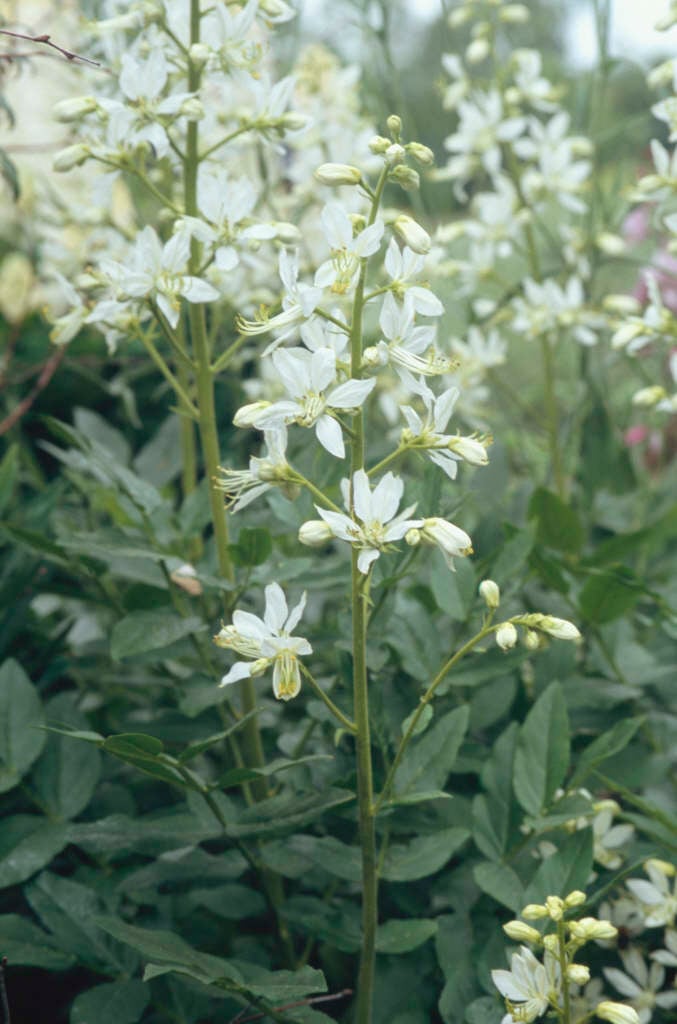Dictamnus albus
dittany
An erect perennial to 1.2m tall, with aromatic, dark green leaves divided into lance-shaped leaflets, and long racemes of white or purple flowers 2.5cm across in early summer

Buy this plant
Size
Ultimate height
0.5–1 metresTime to ultimate height
2–5 yearsUltimate spread
0.1–0.5 metresGrowing conditions
Moisture
Moist but well–drained, Well–drainedpH
Acid, Alkaline, NeutralColour & scent
| Stem | Flower | Foliage | Fruit | |
| Spring | Green | |||
|---|---|---|---|---|
| Summer | White | Green | ||
| Autumn | Green | |||
| Winter |
Position
- Full sun
- Partial shade
Aspect
South–facing or North–facing or West–facing or East–facing
Exposure
Exposed or Sheltered Hardiness
H6Botanical details
- Family
- Rutaceae
- Native to GB / Ireland
- No
- Foliage
- Deciduous
- Habit
- Bushy
- Potentially harmful
- TOXIC to skin with sunlight. Wear gloves and other protective equipment when handling TOXIC to pets with sunlight - see the HTA guide to potentially harmful plants for further information and useful contact numbers
- Genus
Dictamnus are woody-based, aromatic perennials with erect stems bearing pinnate leaves and terminal racemes of 5-petalled flowers
- Name status
Correct
- Plant range
- SW Europe to E Asia
How to grow
Cultivation
Grow in any well-drained, moderately fertile soil in full sun or partial shade
Propagation
Propagate by seed sown in pots in a cold frame as soon as ripe or in early spring
Suggested planting locations and garden types
- Cottage and informal garden
- Coastal
- Wildlife gardens
- Flower borders and beds
Pruning
Cut back to the base in autumn
Pests
Generally pest-free
Diseases
Generally disease-free
Get involved
The Royal Horticultural Society is the UK’s leading gardening charity. We aim to enrich everyone’s life through plants, and make the UK a greener and more beautiful place.